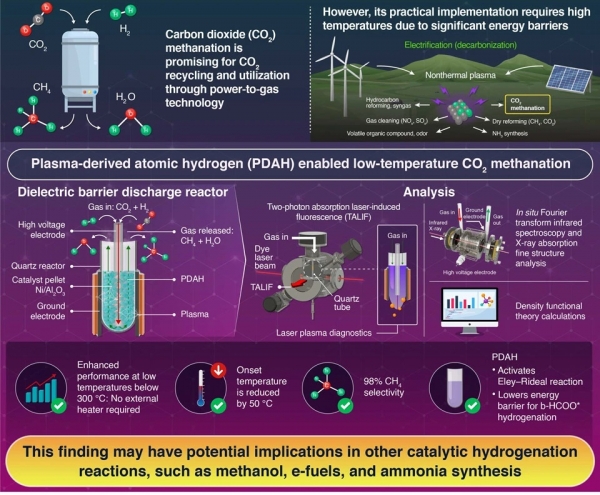Despite declining reserves and significant carbon dioxide (CO2) emissions contributing to climate change, fossil fuels continue to be the most widely used energy source globally. This pressing environmental issue has led researchers to seek methods for reducing atmospheric CO2. One promising approach is CO2 methanation, a process that converts CO2 into methane–a cleaner fuel, by reacting it with green hydrogen in the presence of a metal catalyst.
CO2 methanation is thermodynamically more efficient at low temperatures, ideally allowing the heat of the reaction to sustain it. However, in practice, this reaction must be conducted at high temperatures, requiring an external heat source. This is because the atomic hydrogen, formed by the adsorption and dissociation of hydrogen molecules on the catalyst surface, becomes immobilized and stabilized on the catalyst, reducing its reactivity and necessitating high temperatures to overcome the energy barrier for the rate-determining step. This creates challenges like high energy consumption, carbon deposition on the catalyst, and the formation of unwanted by-products such as carbon monoxide (CO). Fully harnessing the chemical reactivity of atomic hydrogen is crucial for improving CO2 methanation.
Plasma-derived atomic hydrogen enables Eley−Rideal-type CO2 methanation at low temperature Kim et al. (2024) (Photo Credit: JACS Au)
Sustainability Top Stories Sci/Tech Energy Pollution

